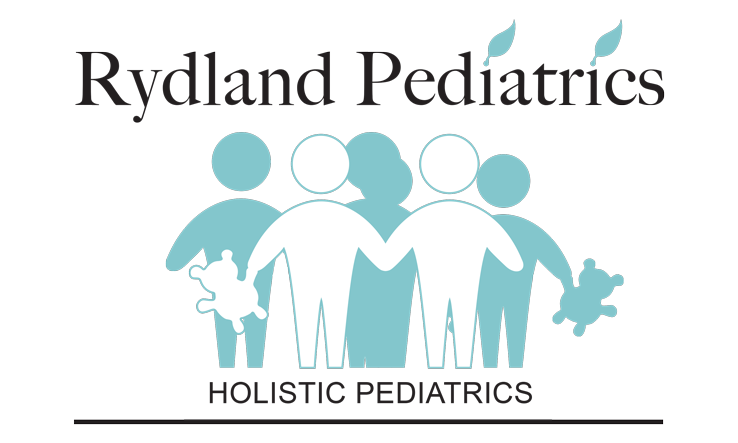CORONAVIRUS 2019/2020 (COVID-19)
- April 30, 2020
- Health and Wellness
The latest widespread outbreak of coronavirus has received widespread reports from the media and has been both a major media event and political issue in recent weeks. Officially reported for the first time December 31, 2019 in Wuhan, province of Hubei, China, and first diagnosed in the United States on January 21, 2020, this virus, named COVID-19 or SARS-CoV-2, has spread worldwide, and caused several million infections and over 180,000 deaths as of this writing, April 23, 2020. Just under one million people have been diagnosed with the virus in the United States with slightly just under 50,000 recorded deaths. Of course, much of the rise in the U.S. is due to more readily available testing; approximately 90% of tests performed here are negative, most authorities believe 98-99% of affected people will survive.
The situation with this virus is still rapidly evolving, as is the information, response, available testing and possible treatments. Most experts expect the number of people diagnosed with the infection to continue to rise, as this virus seems to be highly contagious, and, of course, there are likely to be many that become seriously ill or die due to complications. Our understanding of the virus continues to advance so likelihood of better diagnostic testing, improved treatments and outcomes increase with time.
Coronaviruses, named for the crown-like spikes on their surface, are a large family of viruses that cause illnesses that range from mild cold-like illness up to severe respiratory illness in both animals and humans. They mostly appear to be zoonotic, meaning they originate in and are then transmitted from animals like cats, bats, camels and others to humans and then sometimes (as is the case with this coronavirus) from human to human. Examples of previous severe coronavirus outbreaks include severe acute respiratory syndrome (SARS) in 2003, also originating in Asia, and Middle East respiratory syndrome (MERS) in 2012, both of which were responsible for major illness and numerous fatalities, however more limited in scope than this coronavirus. Early on the COVID-19 virus was suspected to be contracted by exposure to a large seafood and live animal market, but now widely believed to have originated in a biological lab possibly from an infected bat; now it may be transmitted, through person to person in many ways similar to any other virus either through saliva, respiratory secretions or feces. Coronavirus appears to be viable (still living and potentially contagious) on surfaces such as cardboard (about 24 hours), metal surfaces (about 2 days) and plastics, possibly also other materials, but no real confirmatory data has been produced.
The incubation period (time from exposure to onset of symptoms) of the virus seems to be approximately 4-5 days but appears to range from 2-14 days. Symptoms of this specific coronavirus include cold-like symptoms including abdominal symptoms such as diarrhea or vomiting, typically dry cough, fatigue/extreme tiredness, loss of smell and/or taste and fever. Most people infected with coronavirus will completely recover without any complications or more severe symptoms. Some, however, will progress to have varying degrees of difficulty breathing, mild to severe pneumonia, acute respiratory distress, sepsis (blood infection), shock and even death. At present, most, but not all deaths appear to be in individuals with underlying health illnesses/compromise and the elderly (as is the case with many viruses, e.g. influenza). Presently, children and pregnant women currently appear to be mostly spared from severe complications and death. There are new reports indicating that the virus could possibly be transmitted to babies through the mother at delivery, but, thus far no severe illness in the newborn.
Test kits have been developed and are being distributed, first to the CDC then to state and local health departments, and now in an ever-increasing number of locations. Testing of the virus can be performed on a swab from the nose, throat or sputum (coughed mucous) and feces and newer tests can have results within 10-15 minutes. Serologic (blood testing) for antibodies is now available to determine present/past infection.
It is recommended that if you or a family member suspects the illness or that you have come in contact with a person either known to have coronavirus or who has recently travelled to high risk areas that you contact your health care provider first for advice and possible testing, not go to a facility for testing. This is because of both the highly contagious nature of the illness to others and potential spread of disease and the possibility that one’s illness may be another virus and then attending a health clinic or hospital may actually expose and cause that person to contract coronavirus.
The CDC (Center for Disease Control) and WHO (World Health Organization) continuously update information regarding this illness, its locations, prevention, etc. Currently authorities recommend that people do the following to decrease the likelihood of coming in contact with, develop or spread the illness: As with other viral infections it is important to avoid anyone who has travelled to a high risk area or that has cold like symptoms and any droplets (coughing, sneezing, tissues, etc.) from them. Wash hands frequently; coronavirus seems to be eliminated by a 20-30 seconds of hand washing with soap. Avoid touching the eyes, nose, mouth and face, especially with unwashed hands. Cover all coughs and cough into the elbow or a tissue. Stay hydrated.
Most experts believe that one should be at least 6 feet from a person that has cold like symptoms. It is best to avoid any unnecessary contact with others for the time being, especially social gathering and crowds of several people, at least until we have more information. If you or a family member are ill, STAY AT HOME until further notice from the authorities or you have been cleared. Currently quarantine recommendations for someone travelling to an endemic area or who has been exposed to an affected person are for 14 days. Travel recommendations are constantly changing so contact one of these web sites prior to any planned travel.
Presently, despite us having several anti-viral pharmaceutical medications, there are no known effective medical treatments, although this may change as we have more experience (although there are reports of effective treatments with hydroxychloroquine with azithromycin and (most important) zinc and a few antiviral medications), and there is no available vaccine (currently in development and testing). Hydroxychloroquine appears to be a ionophore, facilitating the entry of zinc into the cell to strengthen the immune system’s response to the virus. Of course, as most people know, antibiotics are totally ineffective against viruses and should only be used if there is a bacterial complication as antibiotics weaken the immune system.
What I am recommending for my patients and their families is the following in addition to seeking appropriate professional advice (any pregnant women should seek medical guidance before following any of these recommended treatments other than diet and lifestyle):
- If at all possible, avoid fever medications such as ibuprofen and acetaminophen and other unnecessary unprescribed medications
- Avoid all sugar, corn syrup, artificial sweeteners, fluoride, pesticides and herbicides as these all affect the immune system
- Avoid or minimize junk foods, processed foods and fast foods, using organic/free range/grass fed products as much as possible and encourage abundant amounts of organic plant-based foods, especially vegetables
- Reduce dairy and eggs due to their mucous-producing effect
- Get plenty of sleep, exercise, fresh air and sunshine
- Eat several (optimally five or more) portions of a variety of deep colored vegetables, raw when possible, and drink bone broths, vegetable juices and/or broths along with 2-3 servings of fruit, but not fruit juice
- Liberal amounts of raw local or Manuka honey (not for children under one year old), garlic, ginger, onions, oregano, turmeric, walnut, fermented foods, cod liver oil and medicinal mushrooms (reishi, shiitake, cordyceps, turkeytail) are all beneficial to the immune system and should be regularly consumed
- Thoroughly cook all meat and eggs
- Vitamin A: 3,000 I.U. or 900 micrograms per 10 pounds body weight, up to a maximum of 30,000 I.U. or 9,000 micrograms once daily (anti-viral and strengthens the mucous membranes); reduced amounts for persons with liver disease. With medical clearance from your physician, if you start with symptoms you can give up to 7 times this amount for a maximum of four days.
- Vitamin C (enhances immunity): 200 milligrams per 10 pounds body weight up to a maximum of 2,000 milligrams, divided into several doses throughout the day. Some people can take up to 5 times this amount; higher doses may cause stomach pain or diarrhea. If this happens reduce the dose by 1/2 to 1/3. High dose intravenous vitamin C has been shown to be very effective.
- Vitamin D (shown to be anti-infective and beneficial to the immune system): some authorities recommend an initial dose of 5,000 I.U. per 10 pounds body weight daily for three days and then lower to the 1,000 I.U. per 10 pounds body weight once daily.
- Zinc, 3-4 milligrams per 10 pounds body weight up to a maximum of 40 milligrams daily.
- N-Acetyl cysteine, 100 milligrams per 10 pounds body weight daily (maximum 1,800 milligrams)
- OHMflu (www.kidswellness.com) once per week; increase frequency to three times daily for four days if you develop flu-like symptoms
- Probiotics, L-lysine and colloidal/hydrosol silver (beware of high potency silver products) are all helpful and will help decrease chance of any illness and its complications
- Quercetin and EGCG (epigalloticatechin gallate) appear to be ionophores, important in facilitating zinc entry into the cells in a similar fashion as hydroxychloroquine
- Dr. Rydland’s Family Daily Defense (www.kidswellness.com) twice daily
- Homeopathic arsenicum album and bryonia alba 30C once a day for three days every two weeks.
I also recommend you have a good amount on hand, and, should symptoms present, that you immediately start our Dr. Rydland’s Immune, Respiratory and Cough and Sinus and Allergy formulas all combined together every two hours when awake for 5-7 days with this illness (usually 3 days) and then 3-4 times daily for a total of 14-21 days. Add Dr. Rydland’s Fever and Pain formula as needed. Sovereign Silver Hydrosol the same frequency of administration, is additionally helpful, either orally and/or in a nebulizer. (This is also what I recommend for my patients and their families whenever ill with anything other than a stomach virus.)
We wish you well and good health. Let us know if we may be of assistance in any way.
Dr. Eric Rydland, M.D.
www.drrydlands.com
Dr. Eric N. Rydland, graduated from the University of Miami undergraduate and School of Medicine in 1974 and 1978 respectively and completed his pediatric training at the University of Miami Affiliated Hospitals in 1981. He is pediatric board certified by the American Board of Pediatrics. During his nearly 30 years of clinical experience Dr. Rydland has researched and studied the holistic field and alternative treatments. Integrating these holistic treatments with traditional medical care based upon the wisdom only God can give, has given thousands of patients optimal health benefits. This has been achieved through work with many published authors in the alternative field, his experience, and devine wisdom. In addition to the kidsWellness products our site features other products he uses in his clinical practice. Dr. Rydland is a frequent guest on radio and television, speaker at medical seminars and public conferences, and a published author. He is the Founder and Developer of kidsWellnessTM Incorporated (October 1999)
Upcoming Events
- No Events
WHAT OUR PATIENTS ARE SAYING
Testimonial 1
How I wish I weren't writing this and that by some feat of providence we could have brought you with us to Texas – I don’t know if I’ll ever have the confidence and esteem for another pediatrician that I felt when consulting with you about Frank’s health. Thank you so much for being there when we needed you! Again thank you for everything!
Testimonial 2
Sheri, Hollywood
Sheri, Hollywood
Testimonial 3
Elizabeth, Miami Springs
Elizabeth, Miami Springs



